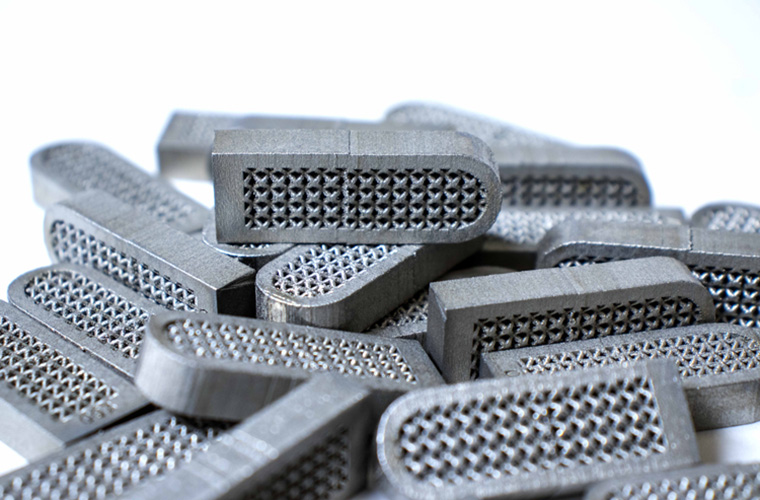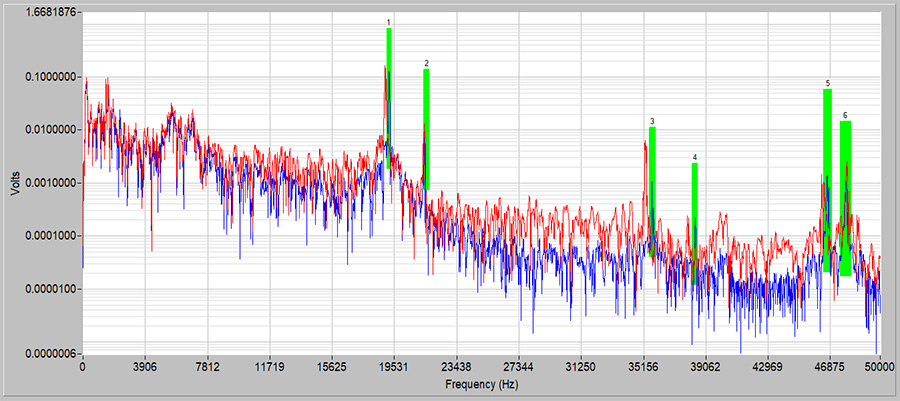Main Menu
- Home
- Product Finder
- Calibration Systems
- Calibration Services
- Digital Sensing
- Industrial Vibration Calibration
- Modal and Vibration Testing
- Non-Destructive Testing
- Sound & Vibration Rental Program
- Learn
- About Us
- Contact Us
 Additive manufacturing offers big benefits for
the biomedical industry – delivering complex, precision parts for safety critical use. As such, 100% quality inspection is key to avoiding potentially catastrophic consequences for patients. Non-Destructive Testing using Resonant Acoustic Method,
NDT-RAM, was used to evaluate the quality of lattice structures. These types of parts are implanted during surgical procedures and encourage bone formation into the lattice post-surgery to create fusing and stability
Additive manufacturing offers big benefits for
the biomedical industry – delivering complex, precision parts for safety critical use. As such, 100% quality inspection is key to avoiding potentially catastrophic consequences for patients. Non-Destructive Testing using Resonant Acoustic Method,
NDT-RAM, was used to evaluate the quality of lattice structures. These types of parts are implanted during surgical procedures and encourage bone formation into the lattice post-surgery to create fusing and stability

NDT-RAM technology enabled defect detection in the lattice structure: allowing the user to determine an issue as small as one missing strut versus no missing struts. Using an NDT Drop Test Fixture Model RAM-DROP, the inspection process was simple and objective. A pass / fail result was returned for each part based on predetermined criteria for the part type. Both Ultrasonic and CT testing become more challenging as parts become more complex - creating a longer, more expensive, less objective process, requiring an experienced inspector. NDT-RAM offers an objective, fast, accurate, 100% quality process.
 Additive Manufacturing has inherent
quality challenges related to how the metal powder is released during part formation. In this specific test set out by ISO Committee TC261-ASTM JG 59, parts were known to have cylindrical, cross layered defects that varied in size and position throughout
the part. Unreleased power also resulted in spherical and cylindrical flaws. In these star artefacts, the defects were present in various regions throughout the part, and in varying size and orientation.
Additive Manufacturing has inherent
quality challenges related to how the metal powder is released during part formation. In this specific test set out by ISO Committee TC261-ASTM JG 59, parts were known to have cylindrical, cross layered defects that varied in size and position throughout
the part. Unreleased power also resulted in spherical and cylindrical flaws. In these star artefacts, the defects were present in various regions throughout the part, and in varying size and orientation.
 Non-Destructive Testing using Resonant Acoustic Method,
NDT-RAM, technology allowed the user to determine if a specific part contained defects. As a whole body, 100% inspection method, NDT-RAM could be used to sort out structurally unsound parts. Using an NDT Test Station Model RAM-TEST-FIXTURE, an investigation was performed using known good and bad parts to establish
testing criteria. After this initial step, a fast testing process occurred, delivering a simple pass / fail result for each part tested, allowing conforming and non-conforming parts to be sorted accordingly.
Non-Destructive Testing using Resonant Acoustic Method,
NDT-RAM, technology allowed the user to determine if a specific part contained defects. As a whole body, 100% inspection method, NDT-RAM could be used to sort out structurally unsound parts. Using an NDT Test Station Model RAM-TEST-FIXTURE, an investigation was performed using known good and bad parts to establish
testing criteria. After this initial step, a fast testing process occurred, delivering a simple pass / fail result for each part tested, allowing conforming and non-conforming parts to be sorted accordingly.